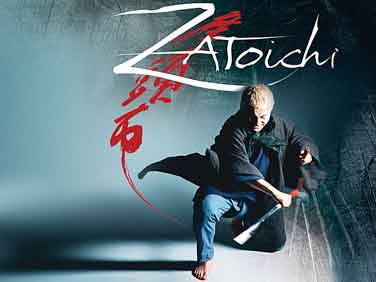A movie theatre. Dim place where we sit to watch the
screening, as though by magic, of our most secret emotions which we
unexpectedly discover are shared by others.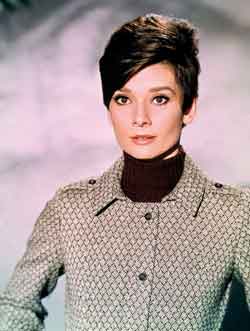
By the people who play
in them, by those sitting next to us, and those who make
them on a film that Pasolini defined "as delicate as the wings of a
butterfly" and that, like a butterfly, we feel impelled to
follow, our gaze guided towards new fantasies. World of lights and
shadows, of people who pretend to be others on a screen where illusions
are dancing, movies seem to have a particular and paradoxical fascination
with the theme of blindness also because it is probably not necessary, as
Woody Allen says, to see to create because directors make movies from
their own perception. Parallel universes living on imagined images,
blindness and cinema have always intertwined their destinies. 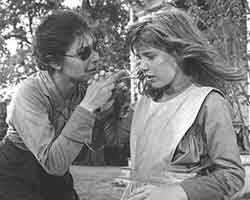
"One is so lucky to be blind because blind
people don't see things as they are, but as how they imagine them to be."
This is what said Vittorio Gassman in the role of Captain Fausto Consolo,
the protagonist in Scent of a Woman (Dino Risi, 1974), one of the most
famous blind characters in cinema. Inspired from the novel by Arpino "The
Darkness and the Honey", winner of the David di Donatello for best
director and best actor and Oscar nominated, the Italian film was remade
in Hollywood in 1992 with Al Pacino in the role of the incredible actor
who was Gassman. From thrillers to comedies, from romance to action, all
genres have proposed a blind person as a central character. The first one
was Charlie Chaplin. In one of his films, City Lights (1931), considered
to be his masterpiece, Charlot falls in love with a blind florist.
Romantic, entertaining, and full of grace, the silent movie succeeds in
moving us in an authentic way, telling a poetic love story only
through a sound track and images.
More recently, with At First Sight (Irwin Winkler, 1999), the relationship between a blind man (Val Kilmer) and Mira Sorvino takes on simpler tones in the more classic American style, while in Il cuore altrove (The Heart Elsewhere, Pupi Avati, 2003), love between a blind girl and her professor serves to describe the Italian society of the early twenties with its prejudice and provincialism. Winner of numerous prizes, The Miracle Worker (Arthur Penn, 1962), was told in melodramatic tones, but without pity and with the strength of the true story. The famous movie was inspired by the life of writer Helen Keller, who was deaf-blind, in her autobiography The Story of My Life in which she recounts her own experience as a child with her teacher Anne Sullivan. Actresses Anne Bancroft in her role as Anne and Patty Duke in her role as Helen both won an Oscar for their touching interpretation. From America to Japan, where the eclectic Takeshi Kitano in 2003 challenges himself as director and actor with Zatoichi's blindness. His blind samurai, legendary character in the Japanese tradition, fighting against injustice, is the instrument used by the director for a critique of the superficiality of our world where images hide the deep truth of things, now visible with eyes closed and an open mind. Hence, movies are not limited to having blind characters that are moving and experiencing difficulties. They present them as heroes who, because of their disability, are fighting and not taken advantage of by a hostile society. In Daredevil (Mark Steven Johnson, 2003), the protagonist is even a superhero. The film is in fact the transposition of the comic books by Marvel telling the deeds of lawyer Matt Murdock, a blind person gifted with extremely acute senses. In Blind Fury (Phillip Noyce, 1989), the mythical Rutger Hauer hides a sword in his walking cane, he is an expert in martial arts and fights against cruel hired assassins. The same courageous behaviour was depicted in fragile Audrey Hepburn's role in Wait Until Dark (Terence Young, 1967) when she fends for herself from three delinquents who are looking for drugs hidden in her appartment. For an art that has made sight its main form of expression, it is truly
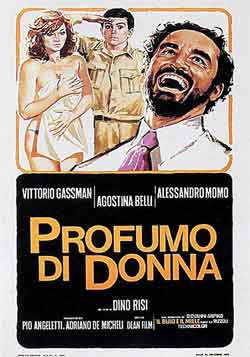
particular the number of
movies produced that pertain to it: from comedies Hollywood Ending (Woody
Allen, 2002) and See no Evil, Hear no Evil (Arthur Hiller, 1989), from the
horror movie The Village (M. Night Shyamalan, 2004) to the drama Dancer in
the Dark (Lars von Trier, 2000) and to Ray, Ray Charles' biography (Taylor
Hackford, 2004). 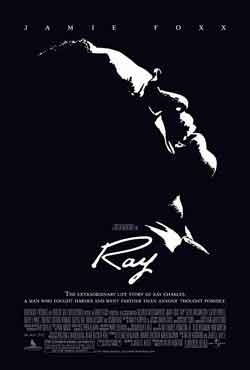
Two recent blockbusters were shown on screen: one is the
film Blindness from Brazilian director Fernando Meirelles inspired from
the masterpiece of Nobel prize winner Josť Saramago in which blindness
becomes a metaphor for the fragility of human condition and the inability
of truly seeing those who are close to us. The other is the new Almodovar
film Los abrazos rotos (Broken Embraces) in which the Spanish director,
inspired by a disease that kept him bedridden in the dark during many
months, tells how pain and darkness can become a source of energy for
imagination.
If cinema, usually made of light and movement translating
the world of those who don't see, becomes pure emotion, it is maybe
because the truly profound perceptions of the human soul don't need eyes
to be seen or to be felt to speak of the experience common to all.
The experience of the imagination, in the end bearing so much more truth
than that of the everyday life.
